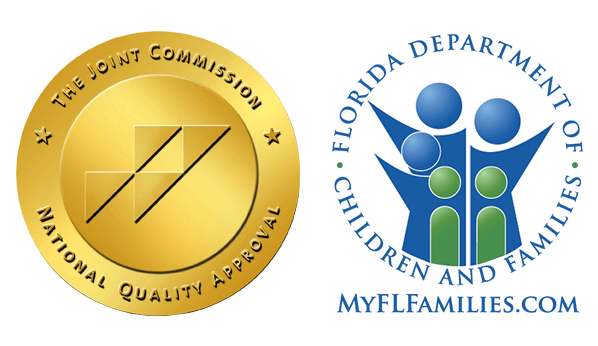Anxiety is a normal emotion – all humans will feel it at certain stages of life. Different scenarios can bring anxiety and nerves with them, such as a social event, a new job, or significant life events such as a birth or marriage.
However, chronic anxiety is a debilitating condition that can cause many challenges for the individual. Anxiety is a unique condition that can be experienced in many different ways, but these are rarely pleasant. This leads many people to self-medicate with substances or alcohol, which in turn can lead to addiction.
Research by the National Institute on Drug Abuse estimates that people addicted to drugs are 50% more likely to suffer from anxiety or mood disorders. Knowing the signs and symptoms of anxiety-related conditions can help reassure you that you’re not alone and improve your understanding of your body and mind.
What Are the Most Common Anxiety Disorders?
There are many forms of anxiety. With this in mind, understanding and establishing what your anxiety disorder is can be the key to receiving appropriate treatment. Here, we will look at some common anxiety disorders to learn how to manage the condition and embark on a sustainable recovery.
Body Dysmorphic Disorder (BDD)
This is when somebody is experiencing compulsions and obsessions regarding their physical appearance. This can take the form of compulsive behaviors such as excessively looking in mirrors or pulling out hair. It can also develop as obsessive worries and thoughts, such as your body weight or shape.
Generalized Anxiety Disorder (GAD)
This is when the individual has frequent or unmanageable worries about many topics in their everyday life. GAD is a very broad diagnosis which means one person’s experience can be very different from others.
An indicator of this condition is when the anxieties you are experiencing don’t correspond to the life you are living. For example, it’s natural to feel nervous about a driving test. However, if you feel intense and unshakable anxiety about car crashes, this could signify generalized anxiety disorder. Physical symptoms can include heart palpitations, excessive sweating, or shortness of breath.
Health Anxiety
This condition is when the individual experiences fears and obsessions related to health and illness. This can include researching symptoms or obsessively checking your body to see if you have developed symptoms. It is considered a branch of OCD.
Obsessive-Compulsive Disorder (OCD)
This is a common disorder where the individual experiences symptoms including:
- Repetitive thoughts, behaviors, or urges
- Compulsive behaviors
- Obsessive thoughts or behaviors
- Anxiety if specific behaviors or actions are not completed
Panic Disorder
This is when you have regular panic attacks without a clear reason or trigger. Somebody who experiences panic disorder can feel constantly anxious about having another panic attack, to the point that this fear can be the cause of further attacks.
Suffering from frequent panic attacks is the main symptom of panic disorder. They are described as sudden, intense feelings of anxiety that come with significant physical symptoms. These physical symptoms include:
- Increased heart rate
- Perspiration
- Shortness of breath
- Chest pain
Phobias
Phobias are characterized by extreme fear or anxiety triggered by a particular situation. For example, some people will have a phobia of being stuck in a small space. Others may have a phobia of a specific object, such as needles. People may not feel any symptoms of anxiety until they come into contact with the source of their phobia.
Post-Traumatic Stress Disorder (PTSD)
Post-traumatic stress disorder is a condition that affects one in thirteen people. It occurs after experiencing a traumatic event. The trauma could range from severe physical or sexual abuse to natural disasters, war, relationship breakdown, or bullying.
For somebody experiencing PTSD, memories of the traumatic event are incorrectly processed, and their bodies respond to life as if the traumatic event were still happening or is about to happen.
Perinatal Anxiety or Perinatal OCD
Perinatal anxiety is a condition where mothers feel intense anxiety at any point from becoming pregnant up to around a year following the birth.
It is commonly known that depression is common following birth. It is less well-known that many mothers experience extreme anxiety during pregnancy and after giving birth. It is common to experience both conditions combined.
Social Anxiety Disorder
Also known as social phobia, social anxiety disorder is when social interactions cause excessive worry for the individual. A common sign of social anxiety disorder is choosing to stay at home to avoid fears of being judged by others.
This anxiety can make it difficult to maintain healthy relationships. When left untreated, social anxiety disorders can negatively affect school or work life.
To Conclude
Learning about these different anxiety disorders can help identify any conditions you or a loved one might be living with. While it can be challenging to accept a diagnosis like this, reflecting on your personal experience of anxiety is often the first step to recovering and accessing vital support.











